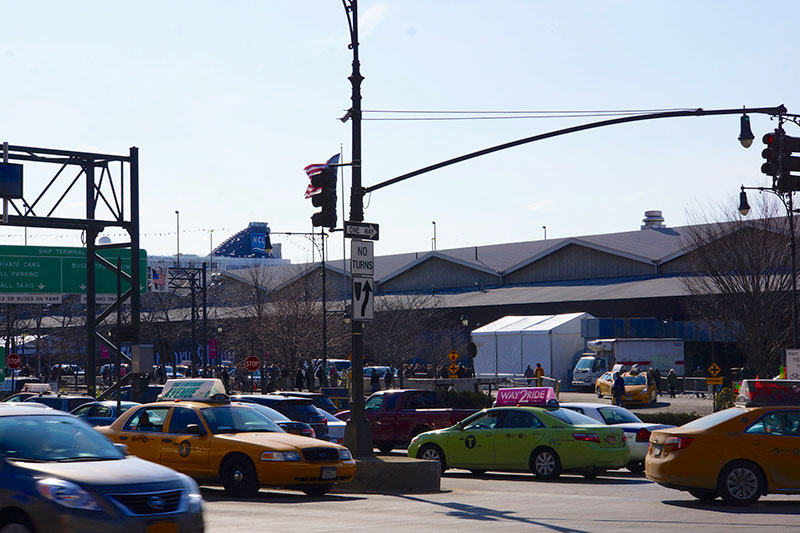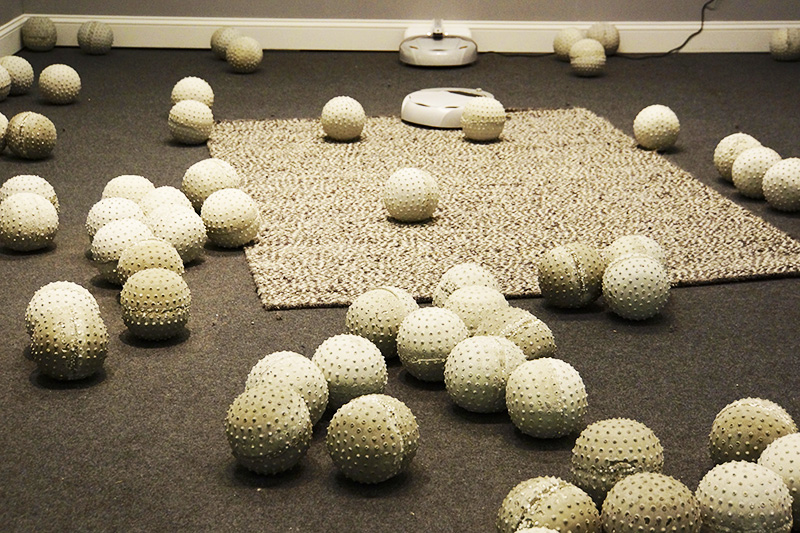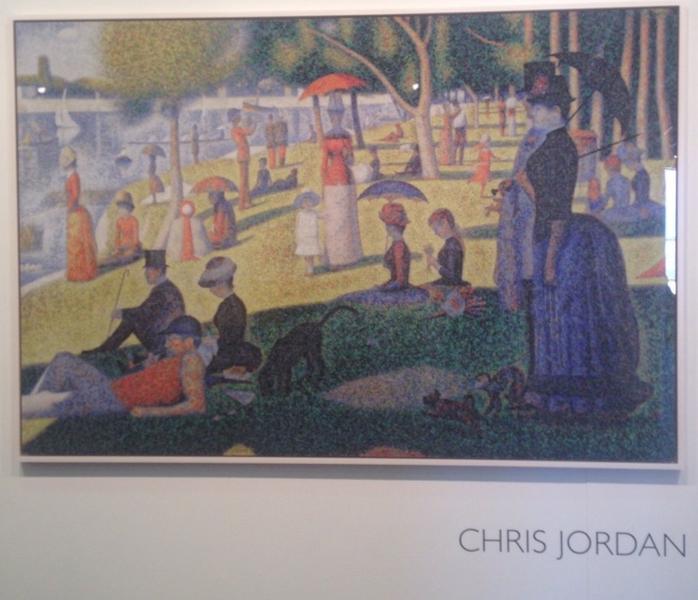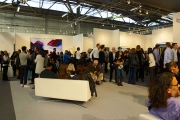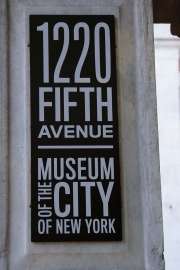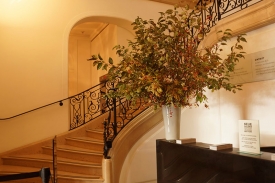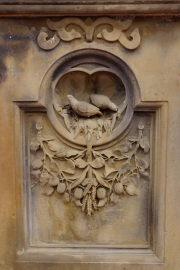 I had a couple of hours on the last morning of my visit to New York and wanted to spend it in Central Park taking pictures. As luck would have it, a couple passing by offered their assistance with directions. Thank goodness for small favors! The gentleman was a Central Park docent and ended up walking and talking me through a private tour. Central Park went from being an amazing place to me to a cherished connection. it’s history is legend and there is a story behind every turn.
I had a couple of hours on the last morning of my visit to New York and wanted to spend it in Central Park taking pictures. As luck would have it, a couple passing by offered their assistance with directions. Thank goodness for small favors! The gentleman was a Central Park docent and ended up walking and talking me through a private tour. Central Park went from being an amazing place to me to a cherished connection. it’s history is legend and there is a story behind every turn.
Did you know that 38 million people a year visit the park with a budget of $38 million dollars a year — with only 15% coming from city funding? The rest is driven by fund raising.
The Park is divided into 42 section, each having it’s own gardener and each gardener having their own team of volunteers.
Every picture, statue, carving, and motif has been carefully hand made by an artisan with tender loving care on behalf of the story behind. There is no end to the lore behind every detail.
By the way, Central Park has it’s own staff of docents with docent tours. Their official website is:
http://www.centralparknyc.org AND http://www.centralparknyc.org/visit/tours/guided-tours/


The Official Website of Central Park – Bethesda Fountain
Rising from Bethesda Terrace is Bethesda Fountain, with the famous Angel of the Waters statue atop. The statue references the Gospel of John, which describes an angel blessing the Pool of Bethesda and giving it healing powers. The fountain commemorates the Croton water system, which first brought fresh water to New York City in 1842. The angel carries a lily in her left hand — a symbol of the water’s purity, very important to a city that had previously suffered from a devastating cholera epidemic before the system was established. The piece is the only statue that was commissioned for the Park. Created by Emma Stebbins, it also marked the first time a woman received a public art commission in New York City.Bethesda Fountain is the central feature on the lower level of the terrace, constructed in 1859-64,[1] which is enclosed within two elliptical balustrades.[2]
I just found some fascinating (I find it fascinating?) information in Wikipedia about Emma Stebbins. She was of interest to me because we are familiar with Harriet Hosmer from having one her best works at the Cleveland Museum of Art. I always introduce her (Harriet) as one of the first recognized American female artists. Interesting.
http://en.wikipedia.org/wiki/Emma_Stebbins
Emma Stebbins
From Wikipedia, the free encyclopedia
Emma Stebbins (1 September 1815 – 25 October 1882) was among the first notable American woman sculptors.
Career
Stebbins was born and died in New York City. Raised in a wealthy New York family, she was encouraged by her family in her pursuit of art from an early age. In 1857, sponsored by her brother Col. Henry G. Stebbins, head of the New York Stock Exchange, she moved to Rome where she moved in with sculptor Harriet Hosmer, who had established herself there in 1852. She studied under John Gibson an English neoclassicist working there at that time. In Rome she fell in love with actressCharlotte Saunders Cushman, and quickly became involved in the bohemian and feminist lesbian lifestyle, which was more tolerated there than it would have been back in New York.[1]
Cushman was confident, strong, and charismatic, and recently recovering from a break up following a ten-year relationship with the actress Matilda Hays. Cushman and Stebbins began traveling together, immediately taking a trip to Naples. Upon their return, they began spending time in a circle that included African American/Native American sculptor Edmonia Lewis, many celebrities, and fellow lesbians that included Harriet Hosmer. In this environment, the women flourished without regard for showing outward affection for one another.[1]
One of Stebbins’ early commissions was a portrait bust of Cushman between 1859-1860. In 1869, Cushman was treated for breast cancer. Stebbins devoted all her time during that ordeal to nursing her lover, ignoring her work during the next two years. The following year, the couple returned to the United States. Cushman died of pneumonia in 1876 at the age of 59. Following the death of Cushman, Stebbins never produced another sculpture. She released the correspondence, Charlotte Cushman: Her Letters and Memories of Her Life in 1878. Stebbins died in New York in 1882, at the age of 67.[1
Stebbins best known work is the Angel of the Waters (1873), also known as Bethesda Fountain, located on the Bethesda Terrace in Central Park, New York. According to Central Park historian Sara Cedar Miller, Stebbins received the commission for the sculpture as a result of influence from her brother Henry, who at the time was president of the Central Park Board of Commissioners. Henry was proud of his sister’s talent and hoped to have many examples of her art in Central Park.
‘Angel of the Waters,’ created to celebrate the clean healthful water from New York’s Croton Aqueduct, completed in 1842, with an oblique reference to the biblical “healing waters of Bethesda.” The fountain complex is widely considered to be one of the great works of nineteenth-century American sculpture.
Her bronze statue of educator Horace Mann was installed outside the State House in Boston in 1865.
Emma Stebbins and her brother Henry are buried at Green-Wood Cemetery, in Brooklyn, New York.
It all started with the reservoir. In 1800 there were 60,000 people living on the southern tip of the island where it was founded by the Dutch. By 1850 that number had grown to a half million people and the living conditions, not having kept up with the growth, were deplorable. The area that is now the park was depleted by prior ravaging for wood and resources used for survival and war.
It was carefully decided to create a reservoir for water that could be channeled to improve the quality of life. the project and result was a tremendous success and was the start of what we know as Central Park today. Every stone, carving, path, plant, bush an area was created by the human effort.
My daughter Margaret tries to run around the reservoir every day. The run is about 1.5 miles and oh my goodness, the reward as much mental as physical!



One of our favorite things ….. to walk to the park..to the boathouse..to the bar..for a before dinner martini (by the time you get there, you’ve earned it?!?).

http://www.centralparknyc.org/visit/things-to-see/great-lawn/loeb-boathouse.html
Boating on the Lake has been a popular pastime from the Park’s earliest days. Six rustic landings originally dotted the water’s edge, and a number of shack-like buildings served as boathouses. Passengers could hire rowboats, gondolas and even multi-seat water buses for ten cents a ride.
As interest in rowing grew, the Lake needed a proper boathouse. In 1874, Park architect Calvert Vaux designed a formal building on the eastern shoreline to provide covered space for docking and storage. With its charming Victorian touches, the building also featured a second-story terrace that afforded beautiful views of the Ramble. A popular draw for more than 80 years, the boathouse fell into disrepair by 1950 and was soon torn down.
The iconic Loeb Boathouse that New Yorkers and visitors know so well today opened at the Lake’s northeastern tip in 1954, financed by philanthropist Carl M. Loeb. From beneath the green patina of the boathouse’s copper roof, visitors can rent rowboats and bikes; hire an authentic Venetian gondola; or dine overlooking seasonal views of the Lake at the Loeb Central Park Boathouse Restaurant.
The Boathouse also serves as the unofficial headquarters for birdwatchers who record their sightings in a two-inch loose-leaf notebook. Kept on a table inside the Boathouse, the hand-written compendium of bird life has become a cherished Park community tradition. Stop by to record your own observations, or read the entries of others.


http://www.centralparknyc.org/visit/things-to-see/north-end/untermyer-fountain.html
Completed before 1910 in Germany, Walter Schott’s Three Dancing Maidens depicts a circle of three young women whose dresses cling to their wet bodies as if they were perpetually in the fountain’s spray. One larger jet of water is featured in the middle of their dance, while two smaller jets appear on either side of the oval pool. The circle of the sculpture and base and the ellipse of the pool complement the slightly oval-shaped garden itself.
The sculpture came to Central Park in 1947 after the death of Samuel Untermyer. It is a cast of the original. Just how Untermyer acquired the sculpture from the Berlin original or had the cast made remains a mystery.
Today the fountain is a joy to those who visit the Conservatory Garden, especially in spring amidst the tulip display, in early May, and in the fall when the Korean chrysanthemums bloom.

The Official Website of Central Park – Alice in Wonderland
Alice and her cast of storybook friends found their way to Central Park in 1959, when philanthropist George Delacorte commissioned this bronze statue as a gift to the children of New York City. Inspired by the zany characters of the Lewis Carroll classic Alice in Wonderland, the sculpture was also meant as a tribute to his late wife, Margarita, who read Alice to their children. Engraved around the statue are lines from his nonsensical poem, The Jabberwocky.
The sculpture is a favorite among children, who love to climb atop it and explore its varied textures and hiding spaces. Through the years, thousands of tiny hands have literally polished parts of its patina surface smooth.
Created by the Spanish-born American sculptor José de Creeft, the piece depicts Alice holding court from her perch on the mushroom. The host of the story’s tea party is the Mad Hatter, a caricature of George Delacorte. The White Rabbit is depicted holding his pocket watch, and a timid dormouse nibbles a treat at Alice’s feet.
Last but not least, you can’t visit the Park without a visit to Brow Bridge. The Bridge has been a magnificent setting for many films including Manhattan, The Way We Were and Keeping the Faith. As a matter of fact, if you look closely, they were filming while I was there…

http://www.centralparknyc.org/visit/things-to-see/great-lawn/bow-bridge.html
This handsomely designed cast-iron bridge measures a total of 87 feet and spans across 60 feet of the Lake, linking the flowering landscape of Cherry Hill with the sprawling woodland of the Ramble. The first cast-iron bridge in the Park (and the second oldest in America), the bridge is named for its graceful shape — reminiscent of the bow of an archer or violinist.
When the Park was first planned, the commissioners requested a suspension bridge. The designers compromised with this refined, low-lying bridge. Today, Bow Bridge is quite possibly New York’s most romantic setting for lovers — and certainly a muse for photographers. You might recognize it from its starring role in many movies, television shows, and commercials.
Rising from the bridge are eight cast-iron urns, installed by the Central Park Conservancy in 2008 as replicas of the originals that had disappeared by the early 1920s. Almost a century later, the Board of Directors of the Women’s Committee of the Central Park Conservancy took up the challenge to restore the urns. A skilled team of Conservancy craftsmen used historic images and took cues from an urn thought to be an exact model of those that originally adorned the Bridge.
 A must stop …..at our favorite neighborhood coffee shop….
A must stop …..at our favorite neighborhood coffee shop….






